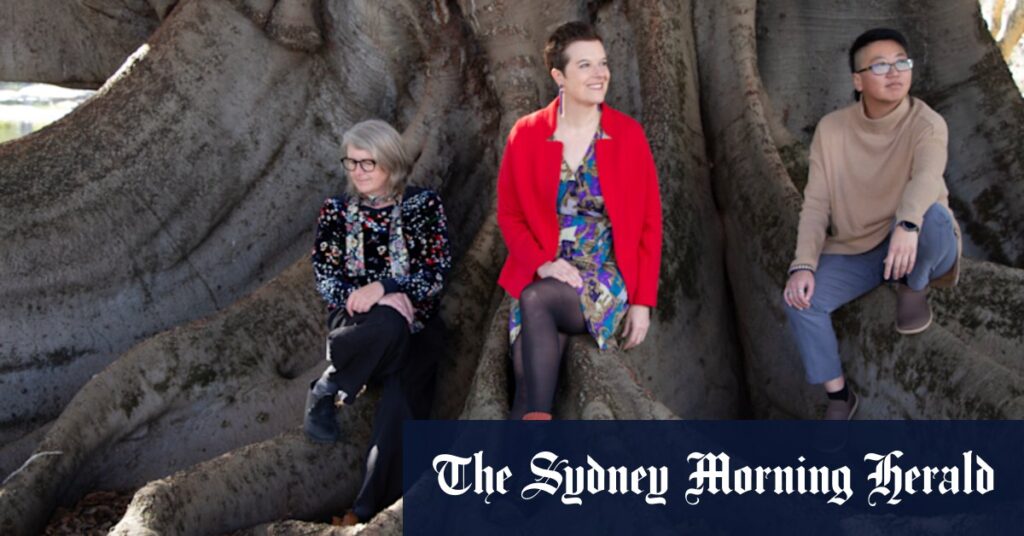“I did a site-specific project on the edge of the forest near Dwellingup in which I researched the trees from ecological, sociological and cultural perspectives,” Tyler said.
“Through this process I saw the link between the impact of colonisation on the land — the cutting down of trees for bauxite mining, for example — and the destruction being caused by the shot-hole borer.
“So when it came to this new project I thought, ’What better way to wrestle with the messy connection between the human and the non-human that dominates our age than through sound.”
Those connections are getting messier, said documentary-maker Gough-Brady, who pointed out the shot-hole borer disaster was caused by human movement.
“There is so much mobility now that the biosecurity measures that once worked because we were an island are not working any more,” said Gough-Brady.
Audiovisual artist Sang said this human movement that brought the shot-hole borer to our shores was a result of our lack of care about our impact on the environment and how damaging some of our practices are.
“It’s why we wanted to have people moving around the work. As you walk the sounds change. As you get close to the tree it shatters. Your movement impacts on the tree and the environment,” Sang said.
While the trio lament the loss of the trees in Hyde Park and across the metropolitan area, they don’t want their work to be an environmentalist lecture, but for those who experience it to think about what has been taken from our lives.
“With this art work we are not offering a solution. We are not claiming we have the answer,” said Tyler.
“What we are offering are ideas and emotions embedded in the work that we hope is a lot more than reading a newspaper article or a website about the shot-hole borer.”
The other two projects that were selected by PICA for development are The Machine Needs A Heart, a karaoke-based project inspired by the series of murders across the Philippines triggered by performers ruining Frank Sinatra’s My Way, and Broome photographer Michael Jalaru Torres’ Nagula Girradiny/Oceans of The Moon, an AR piece incorporating elements from the Yawuru country, including the Baylor shell and moon pool.
All three teams selected for the intensive three-month mentorship with experts working at the intersection of art and technology are now in good shape for PICA’s $75,000 Immersive Arts Commission.
Michael Jarau Torres at PICA with his AR work Nagula Girradiny Oceans of the Moon.Credit: Mark Naglazas
“I was just waiting for the technology to catch up with my ideas,” said Torres during a recent open studio at PICA in which the three teams gave a taste of their works in progress.
“We [Djugun-Yawru people] see the landscape and the sky in our own way. The technology allows us to capture some of the playfulness and interactiveness that is part of our vision and our storytelling.”
PICA chief executive Hannah Matthews said the quality of work that has sprung from Boorda Yeyi was a reflection of the vitality of the tech-meets-arts scene that was flourishing in WA.
Loading
“We tend to think of those big visual tech communities being based in Melbourne and Sydney. But we have an extraordinarily talented group of people who work in the design/tech/gaming sector who choose to live and work here,” she said.
“An example is Raoul Marks, who is part of the team who created the title sequences The Crown, Westworld, American Gods and The Night Manager. He lives in Fremantle and is winning Emmys for his work.”
While technology is an increasingly important tool for artists it is costly to keep up with, which means that once an artist has graduated they lose access to the toys, according to Matthews. This is where organisations like PICA and programs such as boorda yeyi come in.
“It also provides a great opportunity for artists to diversify their income. They might be able to do other training or doing or do some coding,” she said.
The Boorda yeyi Immersion Arts Commission is open to artists across Australia. Applications close on August 18.
Read the full article here

